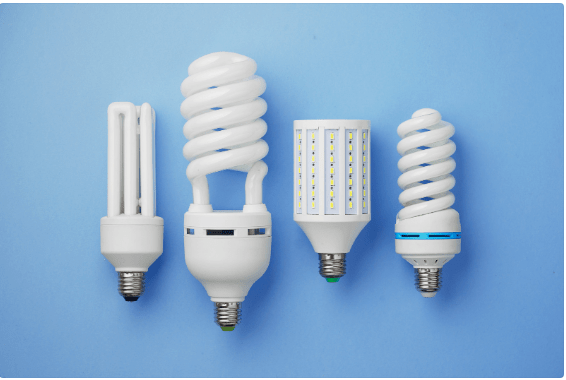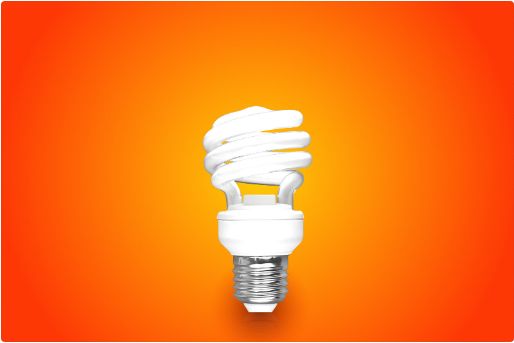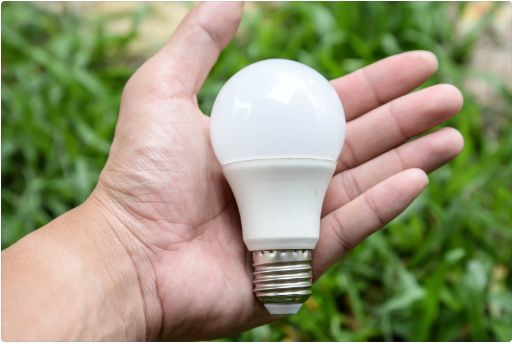CFL Vs LED Bulbs, is there any difference? Well, there sure is. But the history of the invention of the light bulb is quite interesting. Also, the invention of the light bulb is nothing but revolutionary when it comes to modern civilization.
Nevertheless, it was nothing less than a legendary moment when Edison lit the first-ever light bulb. Interestingly, it was not Edison who invented the light bulb in the first place. Edison surely successfully managed to promote the light bulb in a manner that reached out to the masses. It was Edison who laid down the foundations for the future of economic light bulbs. But he did not invent it. Notably, in the year 1802, Sir Humphry Davy successfully created the ‘Electric light.’ He did this by passing the electric current between two Platinum Strips. But, Davy was a Scientist and not smart in marketing. Despite having created the first-ever electric light, he is never credited with the invention of the same. He could not enjoy the name and fame that Edison enjoyed. So, what did Edison do differently? Let us find out.

After Sir Humphry Davy managed to create the first-ever electric light, his fame fizzled out as quickly as the glow of his invention. He did display his invention at the Royal Institute in London. But, there was a tiny problem with Davy’s light bulb. It was too expensive. Later in 1875, a scientist named Pavel Nikolayevich Yablochkov demonstrated his ‘arc lamp’ at the Paris World’s Fair of 1878. This was a pleasant affair as 64 of ‘Yablochkov candles’ were lit up at the Avenue de l’Opéra, Plade du Théâtre Francais and around the Place de l’Opéra. It is since then that Paris earned the nickname of ‘City of Lights.’ But, it has a small problem. These lamps could not be used indoors as they were too bright and too hot. Subsequently, these were ideal for more outdoor applications like film projector lights, Stadium lights, searchlights at the time.
The first person to ‘patent’ his invention was Frederick de Moleyns in the year 1841. But, this did not get too far, as the Bulbs darkened soon enough and were expensive as well. Meanwhile, in 1878, a young scientist named Thomas Elva Edison had burned-out 10000 unsuccessful light bulbs before hitting the ‘Bull’s eye.’ It is worth mentioning that various parallel attempts were being made across the globe to market a light bulb successfully. But, Edison was young, smart, and somewhat lucky to be able to ‘promote’ his idea successfully. Also, the fact that he was a well-known name in the science-circle who has invented the Stock ticker, Phonograph, and Quadruplex. This helped a great deal in ensuring that the ‘Edison bulb’ stayed in the spotlight. He was also known as the ‘Wizard of Menlo Park,’ and that meant a big deal.
Edison Vs Swan
During the same year, Sir Joseph Wilson Swan worked on the incandescent light bulb with carbon filament. He quickly reported his success to the Newcastle Chemical Society and received the patent for his invention. He soon established his own electric lighting company, ‘The Swan Electric Light Company, in 1881. But, Swan could not enjoy his success for a long time. Edison successfully invented a more ‘improved’ the light bulb that could burn for 1200 hours. He received the second U.S patent for his light bulb, and the Edison Electric Light Company was founded. However, Edison did not stop just here. He promoted his invention aggressively all across the country and beyond. This resulted in Edison’s name being associated with the light bulb. He ensured that it was ‘he’ whose name was spelt along with the invention of the light bulb. Conclusively, Edison grew to be known as the inventor of the light bulb; despite various other competitors at the same time. This was a case of pure successful ‘marketing.’
But, Swan was not to settle down without a fight. The two renowned scientists did battle it out for the sole ownership of the patent for the light bulb. The matter reached the courts, and Edison was left with no other option but to allow Swan a share in the success of the invention of the light bulb. The year 1883 was historic, which witnessed the merge of the’ Edison Electric Company’ and the ‘Swan Electric Company.’ Thus, the ‘Edison and Swan United Electric light Company was launched. Of course, Edison ‘bought’ Swan out of the company very soon; and becoming the sole ‘inventor’ of the electric bulb.
The CFL Bulbs

Also known as the Compact Fluorescent Lamp bulb, is the ‘spiral tube’ that is connected to the screw-in Ballast base. This works by having the electricity flowing between two electrodes. These are located at the ends of a tube, which is gas-filled. The tube is Phosphor coated. Light emerges as the energy ‘hits’ the coating. However, it takes about 3 to 30 seconds to finally ‘start’ the light.
Advantages
- This bulb type utilizes less energy.
- This type requires a comparatively less amount of mercury.
- No Mercury released in the process.
Disadvantages
- Headaches
- Anxiety
- Lack of concentration
- Disturbed sleep pattern
- Tiredness
The LED Bulbs

This is also known as the Light Emitting Diode and is the latest technology in light bulbs. These are available in almost all shapes and sizes. The light is produced as the electricity passes across the semiconductor, leading to the emission of visible light. The process is known as electroluminescence.’
Advantages
- Long lifetime
- Are low in maintenance
- Are more commercially available
- Consume less power
- Are brighter
- Do not produce heat
- Switches-on instantly
- Are available in various colours
Disadvantages
- Are expensive
- Lack of standardisation
Difference Between CFL And LED Bulbs
Edison enjoyed a legendary status associated with his invention. But, the ‘evolution of the light bulb did not stop just yet. There continued a quest for a more efficient electric light bulb that could help save. The Energy crisis of the 1970s further propelled the need for better versions of the earlier light bulb. This gave birth to the rise of two very popular types: The CFL and the LED.
What is the difference between CFL and LED Bulbs? Which is better, CFL or LED bulb? Let us find out:
CFL | LED | |
Lumens Per Watt | 60 | 72 |
Efficiency as Compared to Incandescent | 75% | 83% |
The Bulb Life | 14 Years | 34 Years |
Instant On | Almost | Yes |
Dimmable | A few models | Most models |
Mercury Present | Yes | No |
Recyclable | Yes | No |
Brightness Comparison: CFL Vs LED Bulbs
BRIGHTNESS (LUMENS) | CFL(Watts) | LED(Watts) |
400- 500 | 8-12 W | 6-7 W |
650-850 | 13-18 W | 7-10 W |
1000- 1400 | 18-22 W | 12-13 W |
1450-1700+ | 23-30 W | 14-20 W |
2700+ | 30-55 W | 25- 28W |
The Conclusion
So, what is it going to be? Between CFL and LED? How to make the right decision? Let us explore:
Cost-Effective:
In the long run, it is the LED that is the sure winner. Simple calculations show that the LED bulbs are a preferred choice when it comes to saving. It is also an ‘Energy Star’ product backed by the government.
Life Span:
The LED lights have a lifespan of 25000 hours. This makes the product an undisputed winner when it comes to serving you for a long time.
Brightness:
A bulb needs to serve its basic purpose of ‘lighting up the surrounding. The above table clearly shows that the LED lights are brighter as compared to the CFL counterparts.
FINAL VERDICT:
LED light bulbs it is. May Edison Rest in Peace.